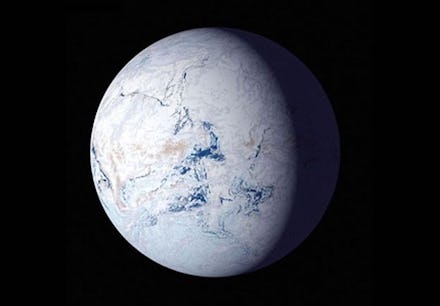How a massive asteroid may have significantly altered Earth's climate

Like the moon, Earth has plenty of craters – they just aren't as prominent since there's all that greenery and water around. They're important, though, because of what they can tell us about the history of our world. Case in point: Yarrabubba Crater, a 43-mile-wide crater in Western Australia. Scientists have just identified it as the oldest known impact crater on the entire planet. Estimated to be around 2.229 billion years old, it's thought to be about half of Earth's age and 200 million years older than the previous crater that held the record, the 190-mile-wide Vredefort Dome found in South Africa.
Scientists were able to glean all of this new information about the crater from a new study, in which it was determined that the Yarrabubba crater may have happened around the time when Earth was coming out of a "Snowball Earth" period, with much of the planet covered with ice and snow. In fact, the meteorite which likely caused the impact could even have brought on the end of the bleak glacial period.
"The age of the Yarrabubba impact matches the demise of a series of ancient glaciations," said study co-author Nicholas Timms, associate professor at the School of Earth and Planetary Sciences at Curtin University.
"After the impact, glacial deposits are absent in the rock record for 400 million years," Timms explained in a statement. "This twist of fate suggests that the large meteorite impact may have influenced global climate."
It's difficult enough to find craters like Yarrabubba, given that so many have been eroded over the years, worn away, and otherwise obscured. Study lead author Timmons Erickson of NASA's Johnson Space Center told Space.com that Yarrabubba "no longer even looks like a crater."
To further study the possible correlation between Yarrabubba's impact and Earth's climate change, Erickson and his team ran through several computer simulations of the possible strike, trying out larger meteorites across a variety of models. The study suggested that an estimated 200 trillion lbs to 440 trillion lbs of water vapor was sent hurtling into the atmosphere after the Yarrabubba impact. Scientists still aren't sure how this could have affected the climate, but are working to decipher what happened.
"Considering that Earth's atmosphere at the time of impact contained only a fraction of the current level of oxygen, a possibility remains that the climatic forcing effects of H2O vapor released instantaneously into the atmosphere through a Yarrabubba-sized impact may have been globally significant," the latest Yarrabubba study reads.
What's the next big move, then? Looking for and studying additional craters around Earth with similar histories and modeling those out as well. Erickson and his team will be working to find and date more craters found over the globe. But for right now, they'll still be examining Yarrabubba and the implications this years-old crater had on the Earth, even so long ago. There's no telling what truths are still out there waiting to be uncovered if teams stumble onto additional ancient craters out there.